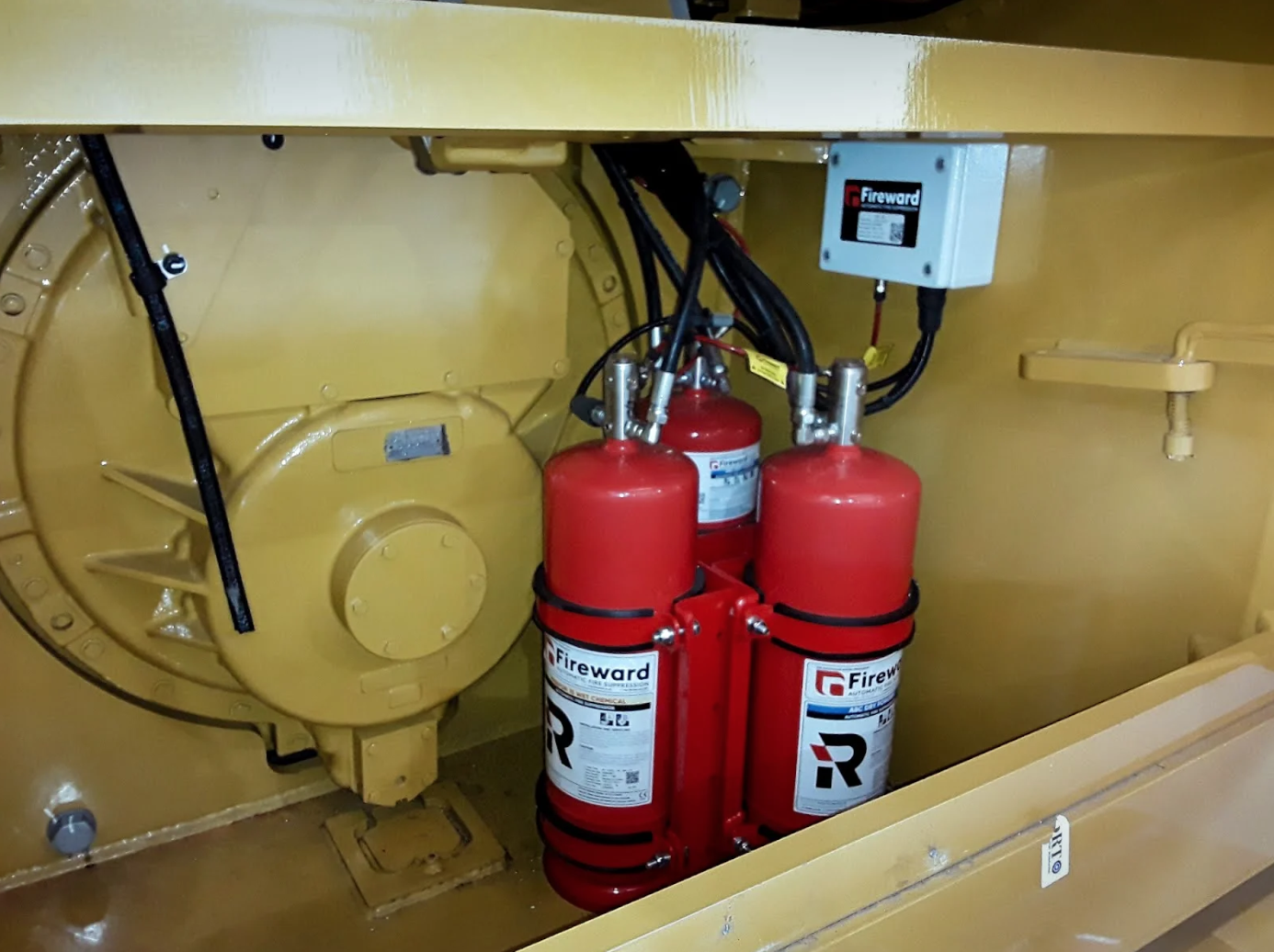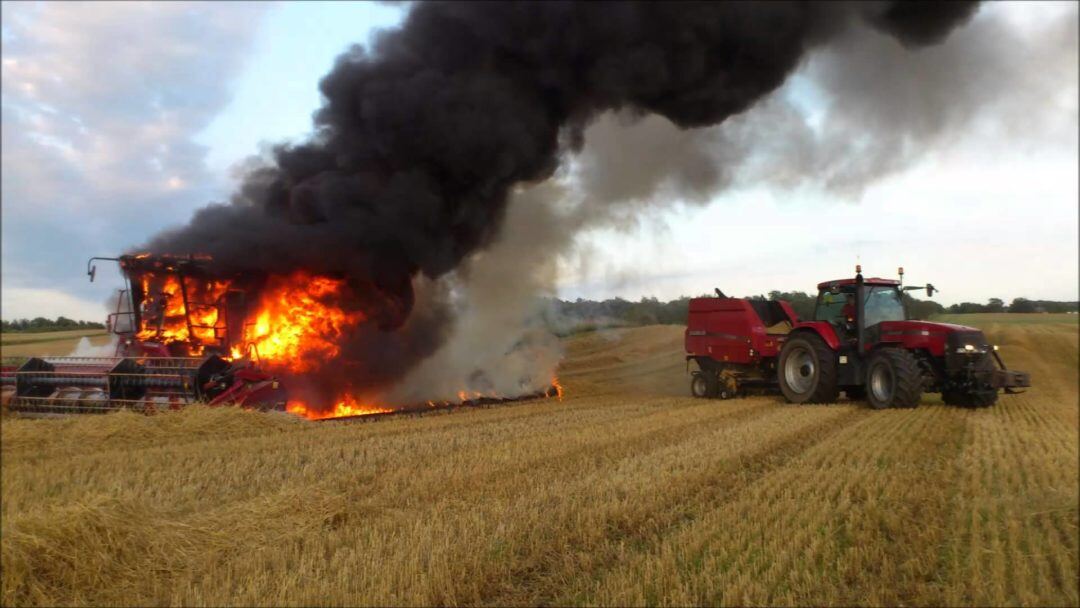Pneumatic versus Linear Electronic Systems - Detection Speed
By Paul Smith on May 15, 2024 10:41:03 AM

Today we'll be covering a very important subject in our industry: A comparison of Pneumatic versus Linear Electronic Systems
Fire detection is a crucial aspect of fire suppression and allows for early detection and intervention in the event of a fire. Two commonly used fire detection systems are Pneumatic Heat sensitive non-metallic Tube, this will be referred to as pneumatic detection and Linear Heat Detection Cable this will be referred to as LHD. In this article, we compare the two different detection methods with their pros and cons to help customers make an informed choice on how to best protect your people and assets.
Introduction
Fire suppression systems are designed to detect and suppress fires in a wide range of environments, including the Waste & Recycling industry, Ports and Aggregates to name but a few major industries. These systems rely on effective fire detection methods to ensure a timely response and prevent potential damage to assets, disruption to operations and danger to life.
Fireward are an independent supplier of automatic fire suppression systems and have access to both Pneumatic detection and LHD. In this article we will explore the working principles, pros and cons, and features of both detection systems.
Pneumatic Detection System
How it Works
Fireward's pneumatic detection operates by utilising a pressurised tube (25 bar) that runs throughout the assets hazardous areas. When exposed to heat or flames exceeding 180 degrees Celsius, the tube ruptures releasing the nitrogen gas. This releases the pressure from the system, opening the suppression cylinder valve and deploying the suppression system agents in a matter of seconds, instantly knocking down the fire and in a dual agent configuration, cooling the hot surfaces preventing reignition.
Pros and Cons
Pros of Pneumatic Detection System
- Suitable for most environments
- No electrical power required. Genuinely a stand alone system
- Rated to 180 degrees Celsius
- Ultra-fast detection
- Fully automatic 24/7.
- Low cost of ownership
Cons of Pneumatic Detection System
- Damage to detection causing rupture will discharge the system
- Can be susceptible to pressure loss if not maintained
Watch the video to see the comparison between the two systems.
LHD System
How it Works
LHD is an alternative to Pneumatic Detection. In the event of a fire, the insulated wires will melt and upon coming into contact will create an electrical short. The resistance change between an end of line resistor and control module will then signal to activate the fire suppression system.
Pros and Cons
Pros of Linear Electronic Detection System
- Suitable for use in most environments
- Rated to 180 degrees Celsius
- Virtually no detection length restriction
Cons of Linear Electronic Detection System
- Significantly longer fire-detection time. Results in greater damage to machines when fires break out
- Costly repairs, after discharge full network of detection requires changing
- If there is no electrical power, the system cannot function at all, leaving a machine completely unprotected
- Can be susceptible to discharge via damage if internal cables connect, often when cables are kinked, trapped or chewed by rodents
Compact and quick to install operating without the need for power.

Comparing Pneumatic and LHD Options
When it comes to detecting fires, speed is of utmost importance. Fireward's pneumatic detection system typically detects fires within 5 seconds of the detection tube rupturing. LHD systems’ detection time can be well over 20 seconds and can be significantly longer in dealing with a fire incident. This increased time taken to detect can cause a great deal more damage to a machine before fire scenario is dealt with.
The difference in damage a machine can suffer from a hydraulic hose fire from 5 to 20 seconds is phenomenal and striking as soon as possible is of the upmost importance.
False Alarm Potential
False activations are an inherent risk in any suppression system no matter what the detection type. Pneumatic suppression systems will always fail safe, resulting in a discharge. LHD system failures will result in a complete loss of function and the suppression system will not deploy when required.
Both detection types will experience discharges should there be significant damage to the detection system. A catastrophic loss of pressure for pneumatic systems will cause discharge and any means that cause the metal wires to connect in LHD will also cause a discharge. LHD suppression systems are also vulnerable to causing a discharge by water ingress through one of the many connections and modules.
Maintenance Requirements
Both systems require periodic checks and maintenance to ensure their effectiveness. Pneumatic tubing and LHD need inspecting at regular intervals to ensure they haven’t been damaged.
Pneumatic systems require a visit, a check for pressure loss before signing back over to the end user so any plant is back up and running with the minimum inconvenience.
LHD systems require the following to be checked and functioning to be active:
- Electronic linear detection
- End of line resistor
- In cab module
- Functioning battery/ machine power not isolated (Item to be replaced every 12 months)
- Electronic cable from module to cylinders
- Electronic firing device at cylinders (to be replaced every 5 years)
Choosing The Right Fire Detection System
When selecting a fire detection system, several factors should be taken into account. These include the specific application, environmental conditions, requirement for approvals and budget. Fireward case studies of successful installations can help provide valuable insights into the effectiveness and suitability of different systems. Fireward have installed automatic fire suppression systems to over 10,000 assets in the UK and have experience across a variety of harsh environments. Our expert team will be able to discuss what system would be best placed for your environment and operational requirements
Conclusion
Fire detection is a critical aspect of fire suppression systems, and choosing the right detection system is crucial for effective fire prevention and suppression.
Fireward's pneumatic detection systems and LHD systems offer unique features and advantages. By considering factors such as detection speed, maintenance requirements and cost, will enable a client to make an informed decision based on their specific needs and requirements.
Remember, the selection of a fire detection system should be based on a comprehensive assessment of the environment, potential fire hazards, and the desired level of protection. By choosing the right system, clients can enhance the safety and security of their premises and ensure rapid response in the event of a fire.
Protecting People and Assets 24/7
To find out more about Fireward’s Automatic Fire Suppression systems, get in touch by calling 0800 151 0249 or email at: sales@fireward.co.uk.
You May Also Like
These Related Stories
Fire Suppression for Tunnels: Advancing Safety with Fireward
.jpg)
Vehicle & Plant Fire Safety in Metal Recycling

